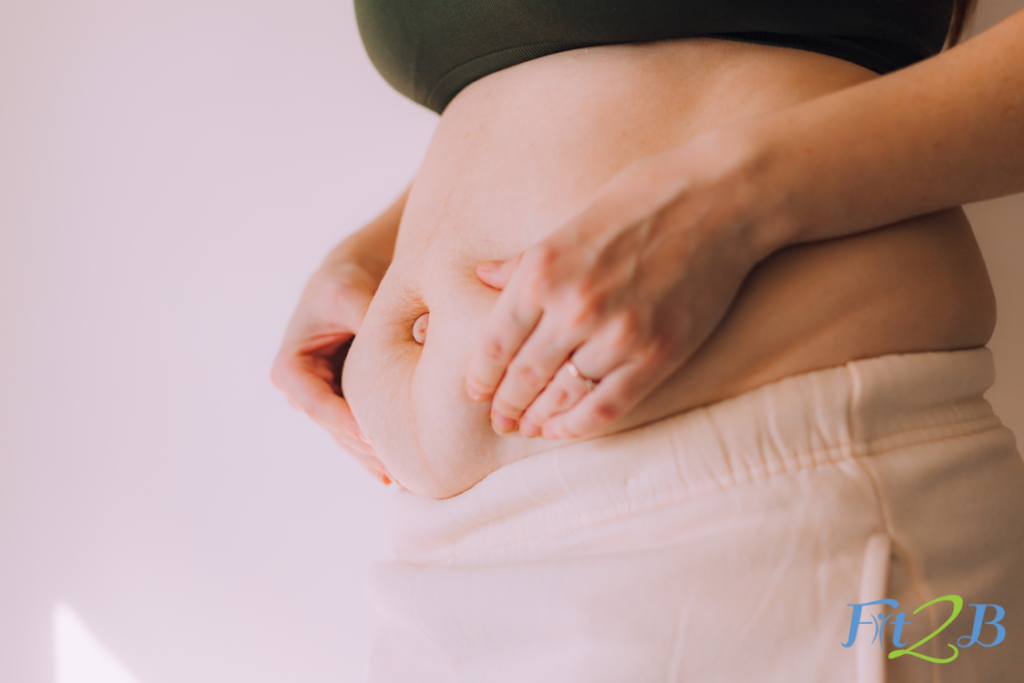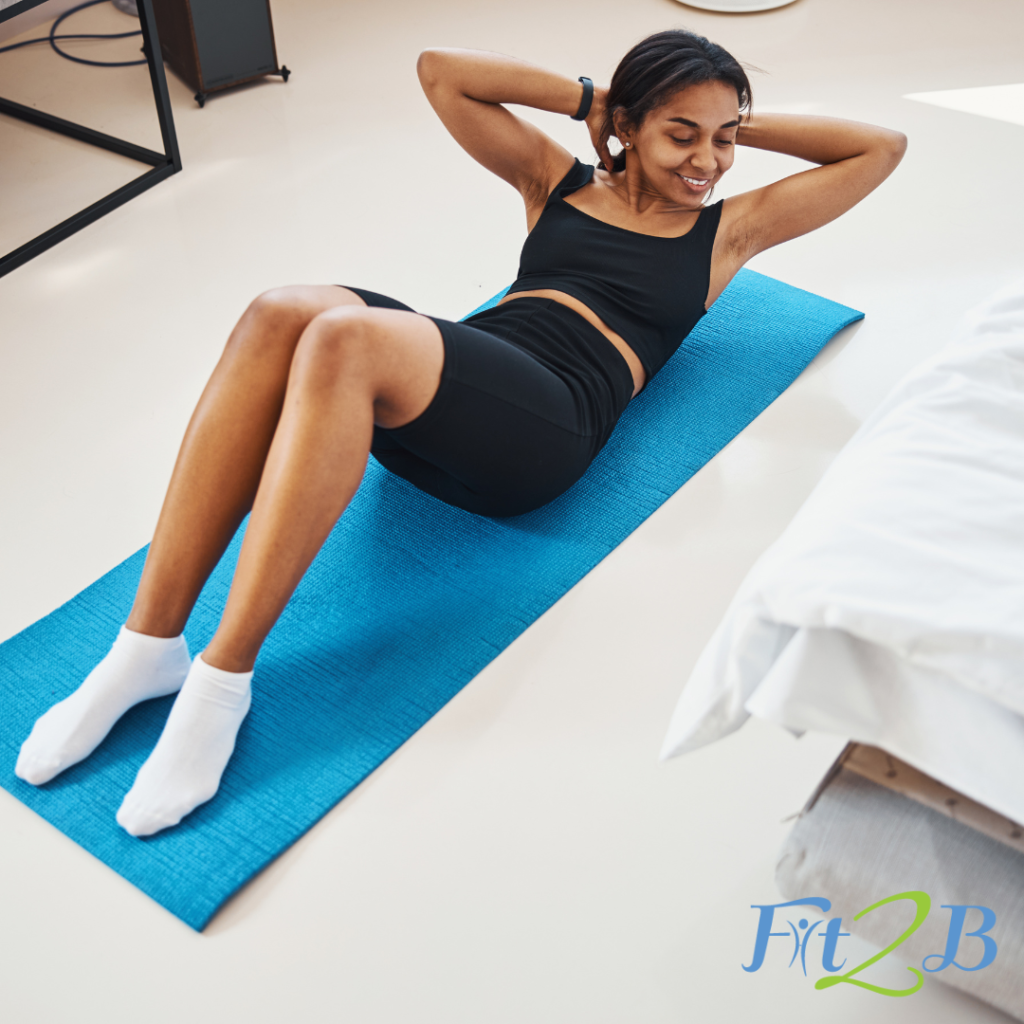Blog, Diastasis Recti
5 Interesting Facts About Your Abs & Diastasis Recti
Alright, alright… I’ll admit this now that I’m no longer in danger of being bullied for it: I’m a nerd. I have a degree in exercise and sport science, more fitness certifications than I have time to list at the moment (see them all here) and I could talk about brains and bodies all day. However, abdominal anatomy – which is an incredibly complex and fascinating subject that many personal trainers often don’t truly understand – is probably my favorite topic next to biomechanics and neuroscience. As a core fitness specialist who eats, sleeps and breathes all things core and diastase recti-related, I thought you’d enjoy these five interesting facts to help you learn more about your abdominal anatomy and what happens to it when Diastasis Recti is in play.
1. Your Abdomen is Protected by fascia:
Fascia is a membrane that covers, supports, and separates muscles, and – in the abdomen specifically – it weaves together like a braid, pulling the two sides of your abdominal muscles together. This strong fibrous tissue runs from below your ribs to your pelvis, stabilizing your entire core…unless it’s compromised. If that fascia thins out and allows the two sides of your abs to shift apart, that’s known as a diastasis rectus abdominus (DRA) commonly called an “ab gap.” The shortened term is “Diastasis Recti” and it can be treated with help of a physical therapist that specializes in cores + corrective exercises like we offer here on Fit2B.
2. You Have Multiple Layers of Muscles in Your Abdomen:
Most people think of the “six pack” when someone mentions their abs. What many don’t know is that there are actually FOUR layers of abdominal muscles—the external obliques on either side of the trunk wrap around your sides; the internal obliques lie beneath them; and deep in your center lies transverse abdominis which wraps around front-to-back like a corset to stabilize your core even when you’re not actively using any other muscles in the area. You also have the rectus abdominus which is that 6-pack most people think they need to “shred.”
But you don’t need to shred your abs to make them stronger and more toned. In fact, maybe you shouldn’t. The abs really can get literally shredded in the process of “getting shredded” which can contribute to Diastasis Recti. Bonus fact: a Diastasis doesn’t just occur in the 6-pack rectus abs. It occurs in the facsia that braids all 4 layers of the abs together. Maybe it should be called a diastasis transoblirectus? Diastasis Rectoblitrans?
Check your abs for diastasis3. The Abdominals Protect Vital Organs:
All those layers of muscle are sheltering important organs like the stomach, small intestine, liver, gallbladder, pancreas, spleen, and large intestine—plus some major vessels and nerves—that make up what we call our digestive system. There are no bones in your belly area because these organs need room to function. Without thick, strong abs protecting your organs while they’re providing vital functions like digestion or filtering blood from toxins there would be no life. Speaking of life, your abs also protect your reproductive organs.
The obliques literally descend in thin layers that encase the testicles of males, and the uterus and ovaries are covered by the lower abs. Even more miraculous is the roll that strong abs play in protecting pregnancy! Pregnant abdominals with severe Diastasis Recti often experience a more pendulous pooch which doesn’t support proper fetal positioning. Using a splint during pregnancy is important if you have Diastasis Recti.
4. There Are Nerves Along Your Midline:
Every system in your body is tied to your nervous system which supplies it with electricity and information so it can do its job correctly without any problem or injury occurring. In your abs, this happens via nerves called the celiac plexus which consists of two nerve pathways originating at different levels within your spine. This is why your “upper abs” from your navel up to your ribs and your “lower abs” from your navel to your pubic bone may feel, look, act, and even display Diastasis Recti differently! Your thoracic nerve supplies your upper abs, while your femoral nerve supplies your lower abs!
Guess which one is sliced during C-section?? Got nerve damage from abdominal trauma or surgery? Learn how to massage the area to heal those nerves here!
5. The Main Purpose Of Your Abs Is 3-Fold
Your abdominals offer three very important things to you: Foundation. Protection. Respiration. Your bones don’t support your muscles. Your muscle support your bones. Your abs give your torso a central foundation. They protect your spine and organs. They also help you breathe! Yes, every single time you breathe, your deepest abdominals are part of that!
This is one reason that the “belly breath” is a major key to treating Diastasis Recti: To get your abdominal fascia to thicken up and pull the two sides of your core back together, we have to start with it’s most basic function – the breath – so every single workout on Fit2B that’s diastasis aware (which is all of them) teaches various breathing and alignment cues so you can connect to all 3 jobs your abs are designed to do during rest and physical activity.
Take a closer look at that picture
Right above this… Take a look at her abs… Are they sticking out or staying flat as she’s doing that twisted, rotational crunch?
There are principles that govern fitness and body sculpting. One of them is “Form follows function.” You train how you want to look. If you want a flatter belly formation, you need to train in ways that shape those muscles into that form. Exercises that cause you to bulge your belly out won’t help, especially if you have unresolved diastasis. That outward pressure will just strain that sensitive fascia even more!
If you can’t keep your abs from bulging outward when you do crunches, other core work, or any type of exercise, I’d urge you to join Fit2B today to start learning how to move with good strategies that address your core issues and help you reach your fitness goals! We have every.single.kind.of.workout. We also have educational courses. Like I said, I’m a nerd, and I’ve gathered all my nerdy colleagues to help me keep delivering delightful content and workouts to you!




Hi Beth, how do you best tone lower abs (below belly button to pelvis). I have a fairly large (2 inch) separation from naturally birthing 4 kids. I’ve consistently exercised with Fit2B for almost 2 years and closed the gap at least an inch. My lower abs though seem to hang (maybe just skin?) when I stand and create a little roll when I sit. How do I get rid of/tone this area?? Thanks so much!
A little roll when we sit is normal. Mine do the same. Skin is elastic, so it will bunch and stretch as we change positions. Loose skin from having babies is quite common. Some will resolve over time with good hydration and as you “fill” that skin differently. Some people opt for plastic surgery to have it removed, but it’s really quite normal. Sorry for the late reply. I’ve been in caregiver mode with my Mother in Law, and my life is wild 😛